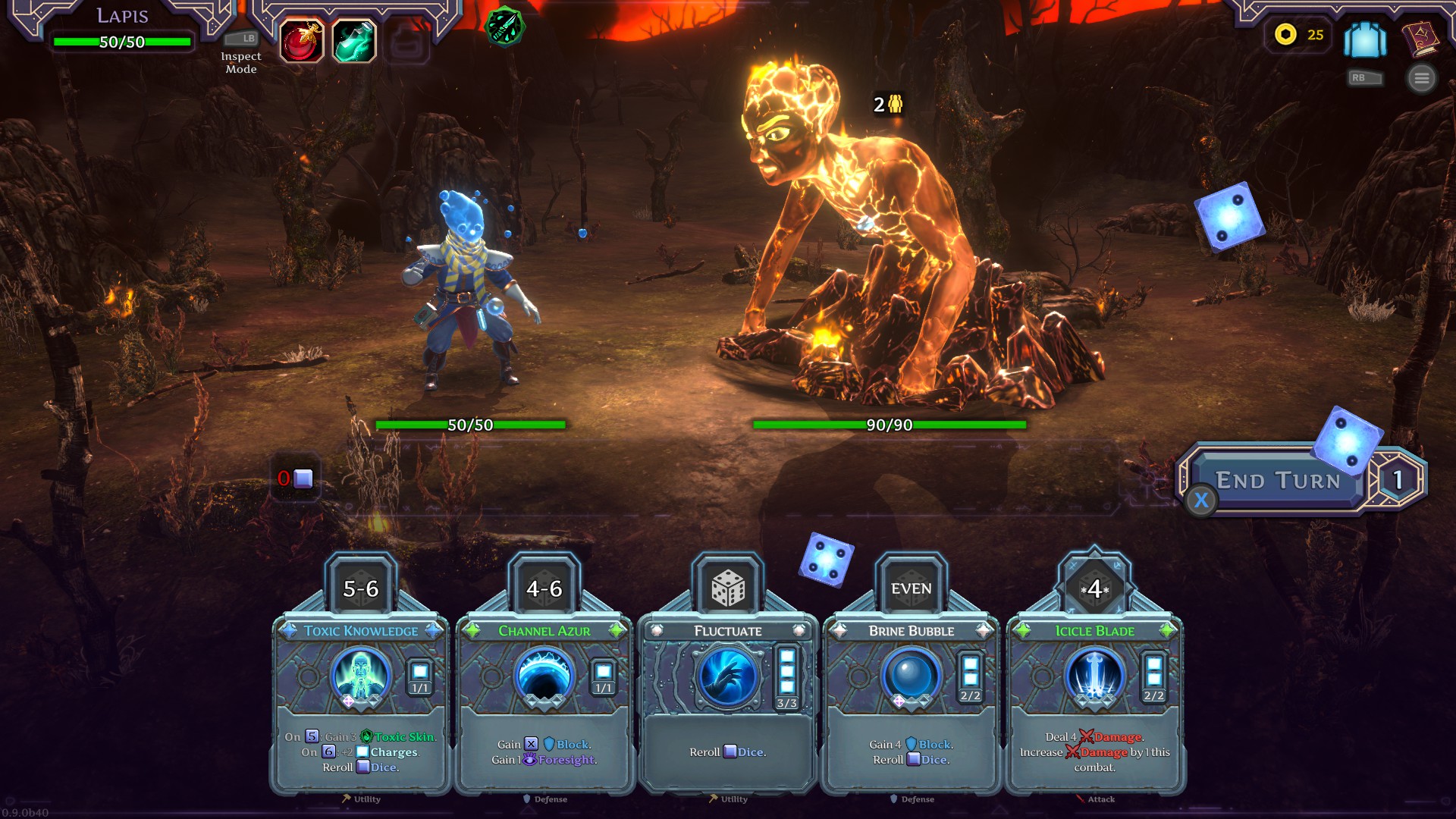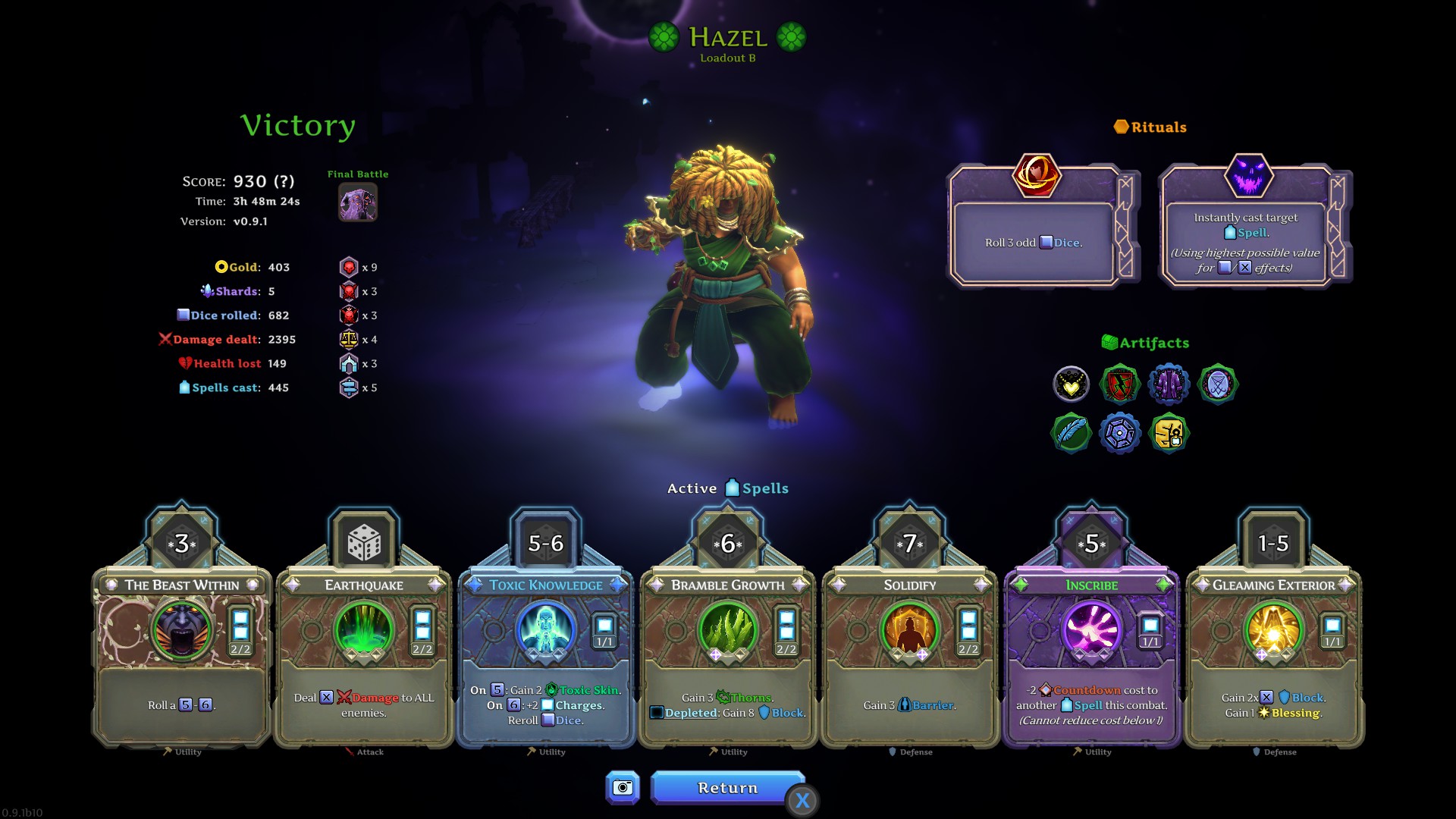Games I almost completely love: SpellRogue (on sale to boot)

A new series
I've actually been trying to write this review for some time. I originally wanted to contrast it with Balatro, which is one of those games which seems to have taken over the indie and deckbuilder communities, and seems to be loved by virtually anyone, myself included. But I think that's a bit pointless, especially at this point. After all, SpellRogue hews closer to Slay The Spire after all, so let's talk about it from that perspective.
To be clear up front (aka tl;dr): I like this game quite a bit. I'll discuss what I think are minor flaws or drawbacks with it, but in general it's very good and worth a try.
The good news about SpellRogue is that it's in early access, which means it has a chance to evolve, and has been evolving since release. It quite possibly will over the coming releases completely overcome what little nitpicks I do have about it. Either way, I hate to only write mouth frothing-levels of praise for games, sometimes they are just somewhere between good and great, and I still want to suggest certain types of players play them. So let's talk about SpellRogue.
In short, if you like deckbuilders and have some patience, this is absolutely a game you want to pick up, but there are some things I think keep it from being the best it could be.
First impressions and Obligatory Comparisons
Right off the bat we're going to do the inevitable and compare SpellRogue to Slay The Spire. If you want to make it in this genre you have to be able to stack up against what is hands down the best deck builder, and maybe (in my opinion) the best game in the last 10 years.
StS was released in early access all the way back in 2017, and having logged hundreds of hours, I still play it at least weekly, sometimes several times a day. Its perfect (albeit crushingly hard) game balance, the characters, art, and my god the amazing music all have hooked me for years. Even when I'm having a bad run the game is still enjoyable; well unless I'm playing the Defect. I'm sorry but there are just too few Defect builds for us mortal humans to have a good time playing.
So SpellRogue had a lot to live up to in my mind here. I will say off the bat that I didn't get along entirely with the art style and music. Some of the presentation (some of the enemies and in particular the victory animation) feel like they are straight out of a generic $2 mobile game. As this game is still in early access, I assume they will give it more personality over time.
I have been spoiled by the stylized and cartoon-y flay 2D characters of most modern indie games in general, so the 3d-characters-on-a-2d-plane approach took some getting used to. But despite some generic-feeling aspects of the visuals in other parts of the game, I do really dig the main characters designs. The same goes for the enemies, even if some of them do look like they are ripped straight out of Elden Ring. In particular the first hero character you play as, Lapiz, looks very water-deity-esque and powerful, and the flowing nature of his body was just neat to watch as you play. Since you're looking at these folks a lot, it's good they put in a lot of effort here.

Gameplay
Now let's get into the meat of the gameplay. Your character follows a very Spire-esque path across 3 levels, with increasingly difficult bosses at the end of each level. You have your bonfire-like healing spaces, regular enemy encounters, Elite enemies, shops, should sound very familiar.
This is where we should talk about the biggest difference SpellRogue game brings to the table: your character casts 'spells' to do things like block, attack, and gain buffs, etc, but the twist is these are all powered by dice. You start out rolling 3 dice, and have to decide which spells to power based on several factors, including whether the enemy is attacking or defending, how much a given spell costs (versus what you rolled), what dice are allowed to use the spell, and how many charges of the spell you get per turn. I cannot understate how thrilling and dynamic this makes combat feel, and is in my mind sort of a game changer for the genre. Other games (e.g. Dicey Dungeons) have done this, but I feel like this game completely nailed the mechanic.
Interestingly, the mechanism for 'upgrading' spells is different in this game and I really like how it's done: Upgrade crystals give you not one, but two possible upgrades to choose from for a given spell. It might make an attack spell do extra damage per invocation, or might let you use that spell more times per turn. For spells that add status effects (e.g. poison), an upgrade might reduce the dice cost of a spell. There are many upgrade combinations to think through, which can feel overwhelming, but this adds more possible build combinations and hence replayability.

Let's be honest: watching dice spin is really almost hypnotic. Gamblers have been lured by this literal depiction of their luck being decided right before the eyes for hundreds of years. The success of games like Baldur's Gate 3 shows that this mechanic also works really well modern gaming - critical moments decided by a dice roll just feel tense - and who doesn't want a little more dopamine in their gaming? I truly love this mechanic.
"But," you might think, "isn't this just more RNG where a few bad rolls can easily ruin a run?" Yes, kind of. However the developers of SpellRogue took this into account, and innovated here as well. The starting deck for every protagonist includes at least one Quality of Life spell, which manipulate the dice, usually re-rolling it in the process. It might just simply re-roll the die, it might re-roll a guaranteed higher value, it might 'flip' it over (i.e. making it the value of 7 minus its original value), or it might re-roll with a specific range of potential outcomes. These spells are bread and butter for manipulating the game to your advantage.
Other minor gripes
The process of actually getting through a round can also feel a bit arduous with certain builds. I get a groove going with Hazel with Gleaming Mana -> Mulch (2x), followed by blocks or attacks as needed. It doesn't sound too bad, but for each of those 3 spells at the beginning you're moving the cursor or mouse, clicking, watching the dice trigger its effect on one or more other dice, re-rolling itself, and all of these have animations which can make the seconds add up. It can get a bit old after a long successful run, which does deflate the fun a tad.
The text is a bit small for my taste, especially when trying to play on a portable device like the Steam Deck, or worse something smaller like an AyaNeo or Ayn portable. You can squint, but this does feel ideal for a sitting-in-bed game at the end of the evening. I don't have a really good suggestion for how to address this, but hopefully the devs can think of some option to perhaps temporarily bump up the size of a text box and font when it's selected?
Finally, I really don't get Azar, well yet anyway. I feel like his basic loadout (the 'A' loadout) just doesn't feel great to play. His QoL dice card is just doubling the die you cast the spell with, and gets just two invocations. So with a particularly terrible starting roll of 3 '1's, your best outcome is 1-1-4. Really not much to go on, and even if you get 2's you're looking at the end result of a 2 and a 6. Maybe this is just really intended to be a class for folks who know the game and builds backwards and forwards. All for a challenge, just saying I haven' felt like he clicks, especially compared to someone like Hazel who is just a load of fun with her poisons and counter-attacks.
One thing which I'm extremely grateful for is that before confiming to use a die on a spell, the arrow showing you how much damage will do takes shields, etc, into account, and confirms that you will in fact be dealing a fatal blow to the enemy. I love this so much, and wish all deckbuilders did it.
Summary
It may sound as if I was more negative than positive in this article, but please don't take it that way: I do genuinely like this game a great deal. I hope it will sell a ton of copies and be considered one of the deckbeilder greats; it's already quite good. I just wanted to point out some places where I think it could improve a tad. It's certainly worth a purchase on sale; at time of writing it's actually on sale on Steam for $12.79, and even at its normal price of under $20 it's definitely worth considering, especially as the devs have shown their intent to improve it and recently pushed out new build.
Fine print
The opinions expressed are those of the author, with no help from any AI, and with no compensation from the publisher or anyone associated with the company, Steam itself, etc. No one received advanced copy or approval rights.
